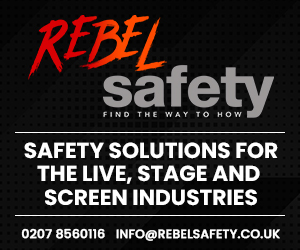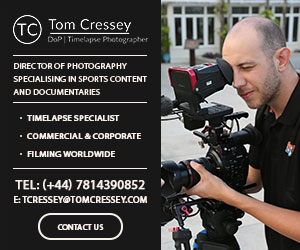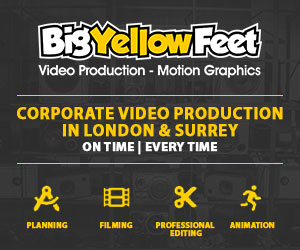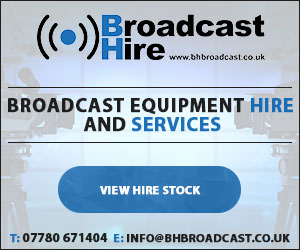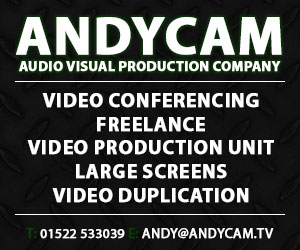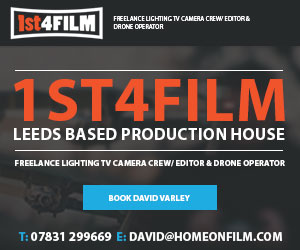Broadcast News
29/01/2019
Broadcast Safe - Just How Safe Is Safe
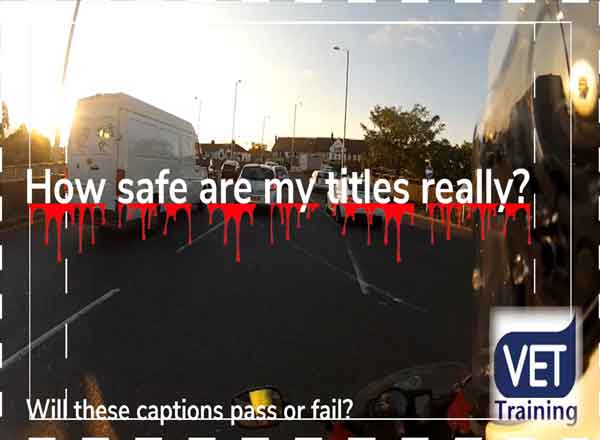
For years QC operators have battled to ensure the broadcasters didn’t reject a programme for content outside broadcast title safe.
In the move from SD to HD we didn't quite avoid the need for 4:3 title safe so even 16:9 content often needed to be 4:3 title safe or if we were lucky 14:9 title safe. This was to protect titles in 16:9 content still being safe if that 16:9 content was horizontally cropped and letterboxed for display on a 4:3 screen as would often be the case for international deliveries.
One of the continual challenges was that few title safe cages (the superimposed guide lines added to the monitoring to indicate the title safe area) exactly matched each other.
So an editor would often get rejected content that looked safe on their screen. Making it hard for them to ensure compliance.
But let's talk about why we needed title safe. Early displays where CRTs and the nature of the technology meant manufacturers routinely over scanned the image to ensure the image completely filled the screen. It wasn’t uncommon for the TV alignment to drift as the TV warmed up or aged and to avoid black edges showing the scan was adjusted to be larger than the tube surface size. Basically showing a slightly zoomed in image.
Horizontally the drift in alignment was the biggest problem so we used to allow 20% horizontally and 10% vertically. Giving us our 80% by 20% title safe. Not to be used for titles or captions to ensure they would be visible on the worst adjusted TV.
So editors and QC operators, on monitors set to be under scanned, ‘Showing a zoomed out image so we can see all the active screen area plus and blanking that may have slipped passed the editor, would Check all titles and captions stayed within the safe title area.
But life's not as simple as even that. What's a title or caption?
Captions are easy as the editor normally adds them although nowadays, we often see in camera captions shot by the camera person at the start or end of a section. These are a real problem if they aren’t compliant as we can’t move them easily.
But other than that any added captions, credits etc should be aligned to be title safe to whatever spec is required.
Content that comes on screen that contains text needs some sensible interpretation on the requirement for it to be title safe. The normal rule applied is the content needs to be title safe if reading it is integral to the story. Incidental text on screen is unimportant.
Also text that is important doesn’t have to be on screen, in the title safe area, at any particular moment. A title can scroll across, or even up and down, as long as all the important content passes through the title safe area.
OK simple so far...
But what about titles that slightly encroach outside our hallowed title safe grid?
It was generally accepted that the hanging descender part of a letter could dangle below the safe title guides but for many years a strict line was taken on even a pixel of a letter extending beyond the title safe cage.
In part this was because an eyeball QC would be done by the broadcaster and a rejection due to a simple title issue would be embarrassing and expensive. So QC operators at facilities and post houses took a hard line on title safe compliance.
But the world's moved on (or at least I hope and teach it has). We don’t watch TV on CRT displays any longer. Modern flat screens don’t drift out of alignment and generally have a much smaller overscan, many with the option to show all the active pixels.
This has been recognised by the DPP (Digital Production Partnership) in the change to 90% horizontal and vertical title safe. This came in with version 5.0 of the DPP spec in March 2017.
But it's a common discussion topic on the QC courses I deliver for Broadcasters and facilities, Just how strict should you be on applying title safe?
The way I teach it is to imagine you have masked off the edges of the screen so you can only see the 90% title safe area. Can the words you see still be read and understood?
Generally they can easily be read and if so that should be acceptable. But if a potentially cropped letter makes a word ambiguous then it's a problem.
So we have a title with a slight overhang outside title safe but its clearly readable an unambiguous, is that a compliance fail? Well technically it would be a breach of the DPP spec as applied by that broadcaster but here is where another variable comes into play. Broadcasters will often make exceptions to their own specs. And in the new world of broadcast less and less content will be eyeball checked at the broadcasters end.
So the bottom line ends up being that a title safe issue can often go back to the producer for producer sign-off. If the producer is happy to accept the title position then any issue will be between the broadcaster and the producer in the true spirit of the DPP implementation of the current delivery arrangements.
Exactly how that relates to the current reality of most producers being freelance and not being paid or responsible for that production by the time its at final QC is another matter altogether.
So where does this leave QC operators and QC departments?
I do my best to encourage a reasonable and consistent approach to the application of your title safe cage. Use common sense around the readability of the content on screen. Be consistent and fair.
But firstly, remember that you may not be working to the current spec. A broadcast commission is issued with a tech spec and the delivery spec is that spec issued at that time. So all QC checks have to be related to the commissions spec unless you work to an overriding spec.
Often a call to the broadcaster can clarify that the current delivery spec can be applied unless they have a particular reason to apply the commissioned spec.
So when you are sure what spec you are checking against and that your title safe cage is correctly setup you can use common sense to determine if titles are safe or not and anything that is unsure the producer can make the final call on.
I'm sure this will continue to be a topic for discussion in my QC courses for years to come but hopefully we can move to a position where everyone involved in the creation of titles and captions can use common sense and we can avoid needless rejections, lost time and incurred costs.
Pat Horridge VET Training
www.vet.co.uk
In the move from SD to HD we didn't quite avoid the need for 4:3 title safe so even 16:9 content often needed to be 4:3 title safe or if we were lucky 14:9 title safe. This was to protect titles in 16:9 content still being safe if that 16:9 content was horizontally cropped and letterboxed for display on a 4:3 screen as would often be the case for international deliveries.
One of the continual challenges was that few title safe cages (the superimposed guide lines added to the monitoring to indicate the title safe area) exactly matched each other.
So an editor would often get rejected content that looked safe on their screen. Making it hard for them to ensure compliance.
But let's talk about why we needed title safe. Early displays where CRTs and the nature of the technology meant manufacturers routinely over scanned the image to ensure the image completely filled the screen. It wasn’t uncommon for the TV alignment to drift as the TV warmed up or aged and to avoid black edges showing the scan was adjusted to be larger than the tube surface size. Basically showing a slightly zoomed in image.
Horizontally the drift in alignment was the biggest problem so we used to allow 20% horizontally and 10% vertically. Giving us our 80% by 20% title safe. Not to be used for titles or captions to ensure they would be visible on the worst adjusted TV.
So editors and QC operators, on monitors set to be under scanned, ‘Showing a zoomed out image so we can see all the active screen area plus and blanking that may have slipped passed the editor, would Check all titles and captions stayed within the safe title area.
But life's not as simple as even that. What's a title or caption?
Captions are easy as the editor normally adds them although nowadays, we often see in camera captions shot by the camera person at the start or end of a section. These are a real problem if they aren’t compliant as we can’t move them easily.
But other than that any added captions, credits etc should be aligned to be title safe to whatever spec is required.
Content that comes on screen that contains text needs some sensible interpretation on the requirement for it to be title safe. The normal rule applied is the content needs to be title safe if reading it is integral to the story. Incidental text on screen is unimportant.
Also text that is important doesn’t have to be on screen, in the title safe area, at any particular moment. A title can scroll across, or even up and down, as long as all the important content passes through the title safe area.
OK simple so far...
But what about titles that slightly encroach outside our hallowed title safe grid?
It was generally accepted that the hanging descender part of a letter could dangle below the safe title guides but for many years a strict line was taken on even a pixel of a letter extending beyond the title safe cage.
In part this was because an eyeball QC would be done by the broadcaster and a rejection due to a simple title issue would be embarrassing and expensive. So QC operators at facilities and post houses took a hard line on title safe compliance.
But the world's moved on (or at least I hope and teach it has). We don’t watch TV on CRT displays any longer. Modern flat screens don’t drift out of alignment and generally have a much smaller overscan, many with the option to show all the active pixels.
This has been recognised by the DPP (Digital Production Partnership) in the change to 90% horizontal and vertical title safe. This came in with version 5.0 of the DPP spec in March 2017.
But it's a common discussion topic on the QC courses I deliver for Broadcasters and facilities, Just how strict should you be on applying title safe?
The way I teach it is to imagine you have masked off the edges of the screen so you can only see the 90% title safe area. Can the words you see still be read and understood?
Generally they can easily be read and if so that should be acceptable. But if a potentially cropped letter makes a word ambiguous then it's a problem.
So we have a title with a slight overhang outside title safe but its clearly readable an unambiguous, is that a compliance fail? Well technically it would be a breach of the DPP spec as applied by that broadcaster but here is where another variable comes into play. Broadcasters will often make exceptions to their own specs. And in the new world of broadcast less and less content will be eyeball checked at the broadcasters end.
So the bottom line ends up being that a title safe issue can often go back to the producer for producer sign-off. If the producer is happy to accept the title position then any issue will be between the broadcaster and the producer in the true spirit of the DPP implementation of the current delivery arrangements.
Exactly how that relates to the current reality of most producers being freelance and not being paid or responsible for that production by the time its at final QC is another matter altogether.
So where does this leave QC operators and QC departments?
I do my best to encourage a reasonable and consistent approach to the application of your title safe cage. Use common sense around the readability of the content on screen. Be consistent and fair.
But firstly, remember that you may not be working to the current spec. A broadcast commission is issued with a tech spec and the delivery spec is that spec issued at that time. So all QC checks have to be related to the commissions spec unless you work to an overriding spec.
Often a call to the broadcaster can clarify that the current delivery spec can be applied unless they have a particular reason to apply the commissioned spec.
So when you are sure what spec you are checking against and that your title safe cage is correctly setup you can use common sense to determine if titles are safe or not and anything that is unsure the producer can make the final call on.
I'm sure this will continue to be a topic for discussion in my QC courses for years to come but hopefully we can move to a position where everyone involved in the creation of titles and captions can use common sense and we can avoid needless rejections, lost time and incurred costs.
Pat Horridge VET Training
www.vet.co.uk
Top Related Stories
Click here for the latest broadcast news stories.
15/02/2022
Biamp Announced As Title Sponsor For PDX Jazz Festival
Biamp has been announced as the title sponsor for the 19th annual PDX Jazz Festival, 17 - 26 February. The nine-day festival, held in venues throughou
Biamp Announced As Title Sponsor For PDX Jazz Festival
Biamp has been announced as the title sponsor for the 19th annual PDX Jazz Festival, 17 - 26 February. The nine-day festival, held in venues throughou
19/11/2012
SkyFall Title Sequence Created By Rattling Stick And Framestore
Commemorating the 50th anniversary of the James Bond film franchise, long-time collaborators Daniel Kleinman and Framestore have teamed up for the fif
SkyFall Title Sequence Created By Rattling Stick And Framestore
Commemorating the 50th anniversary of the James Bond film franchise, long-time collaborators Daniel Kleinman and Framestore have teamed up for the fif
13/10/2011
New Development Head For Title Role
A growing Manchester based independent producer is striding into the final quarter of 2011 with a re-commission from the Crime & Investigation Network
New Development Head For Title Role
A growing Manchester based independent producer is striding into the final quarter of 2011 with a re-commission from the Crime & Investigation Network
13/09/2010
Title Role Lands Commission To Bridge The World
UK indie Title Role Productions has announced its latest commission from History to produce a one-hour documentary special entitled How Britain Bridge
Title Role Lands Commission To Bridge The World
UK indie Title Role Productions has announced its latest commission from History to produce a one-hour documentary special entitled How Britain Bridge
24/06/2010
Title Role Invests In HD
A Manchester-based factual and entertainment indie has upgraded its in-house technology so that it can produce shows in HD and without tape. Title Rol
Title Role Invests In HD
A Manchester-based factual and entertainment indie has upgraded its in-house technology so that it can produce shows in HD and without tape. Title Rol
27/04/2009
Richard Morrison Creates Title Sequence For 'Off Camera' Festival Of Independent Film
Award-winning film titles designer Richard Morrison created a title sequence for the second edition of International Festival of Independent Cinema 'O
Richard Morrison Creates Title Sequence For 'Off Camera' Festival Of Independent Film
Award-winning film titles designer Richard Morrison created a title sequence for the second edition of International Festival of Independent Cinema 'O
09/01/2009
Rushes Creates Title Sequence For ITV1's 'Demons'
Rushes has recently completed work for the opening titles and logo of ITV1's latest drama 'Demons', a modern-day take on the mythology surrounding Dra
Rushes Creates Title Sequence For ITV1's 'Demons'
Rushes has recently completed work for the opening titles and logo of ITV1's latest drama 'Demons', a modern-day take on the mythology surrounding Dra
25/07/2008
Concrete Posts Title Sequences For Calum Best's MTV Reality Series
Concrete, a leading post house based in Soho and the first facility to host a 3D Stereoscopic suite in Europe, has just recently completed twenty five
Concrete Posts Title Sequences For Calum Best's MTV Reality Series
Concrete, a leading post house based in Soho and the first facility to host a 3D Stereoscopic suite in Europe, has just recently completed twenty five
07/05/2008
2002 Studios Chosen To Work On Upcoming Faramix Games Title
Having previously provided original music, sound design and multilingual voice tracks on promotional films and multimedia for a range of blue chip com
2002 Studios Chosen To Work On Upcoming Faramix Games Title
Having previously provided original music, sound design and multilingual voice tracks on promotional films and multimedia for a range of blue chip com
08/01/2008
Irish Censor 'Cuts' Own Title
The Irish Film Censor's Office is to drop the 'censor' part of its name. The official 'censored' his own title with news that the watchdog has reveale
Irish Censor 'Cuts' Own Title
The Irish Film Censor's Office is to drop the 'censor' part of its name. The official 'censored' his own title with news that the watchdog has reveale
20/11/2007
Class On Demand Launch Training Title For TriCaster Studio
Class on Demand, a provider of professional educational products for creative markets, has announced the availability of the self-paced training title
Class On Demand Launch Training Title For TriCaster Studio
Class on Demand, a provider of professional educational products for creative markets, has announced the availability of the self-paced training title
29/06/2007
Smith & Foulkes To Direct Title Sequence For PLATFORM International Animation Festival
Directing duo Smith & Foulkes of Nexus Productions have been invited to direct the title sequence for the debut PLATFORM International Animation Festi
Smith & Foulkes To Direct Title Sequence For PLATFORM International Animation Festival
Directing duo Smith & Foulkes of Nexus Productions have been invited to direct the title sequence for the debut PLATFORM International Animation Festi
17/11/2006
Framestore CFC Gives ‘Casino Royale’ Digital Mastergrade And Title Sequence
The latest James Bond adventure ‘Casino Royale' directed by Martin Campbell and produced by Barbara Broccoli and Michael G. Wilson opened in the UK an
Framestore CFC Gives ‘Casino Royale’ Digital Mastergrade And Title Sequence
The latest James Bond adventure ‘Casino Royale' directed by Martin Campbell and produced by Barbara Broccoli and Michael G. Wilson opened in the UK an
25/10/2006
BFI Launches New Title In Its Archival Shorts Initiative
The British Film Institute (BFI) is launching another title in its archival shorts initiative - 'Handkerchief Drill' (1949). Short films drawn from th
BFI Launches New Title In Its Archival Shorts Initiative
The British Film Institute (BFI) is launching another title in its archival shorts initiative - 'Handkerchief Drill' (1949). Short films drawn from th
06/08/2004
BBC Broadcast & BBC Post Production complete Olympics title sequence
BBC Broadcast and BBC Post Production have collaborated to produce the title sequence for BBC Sport’s coverage of the 2004 Athens Olympics. The sequen
BBC Broadcast & BBC Post Production complete Olympics title sequence
BBC Broadcast and BBC Post Production have collaborated to produce the title sequence for BBC Sport’s coverage of the 2004 Athens Olympics. The sequen





